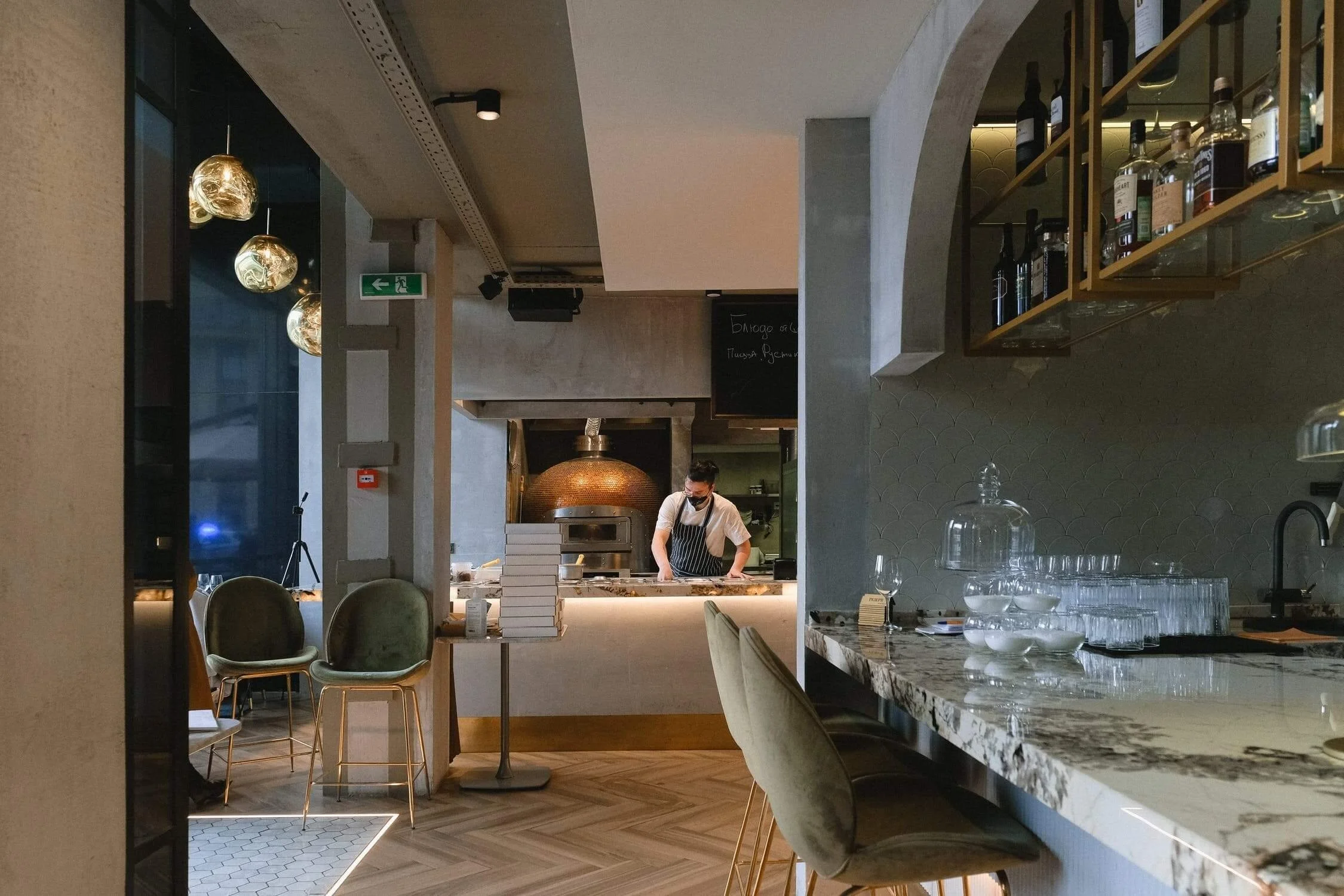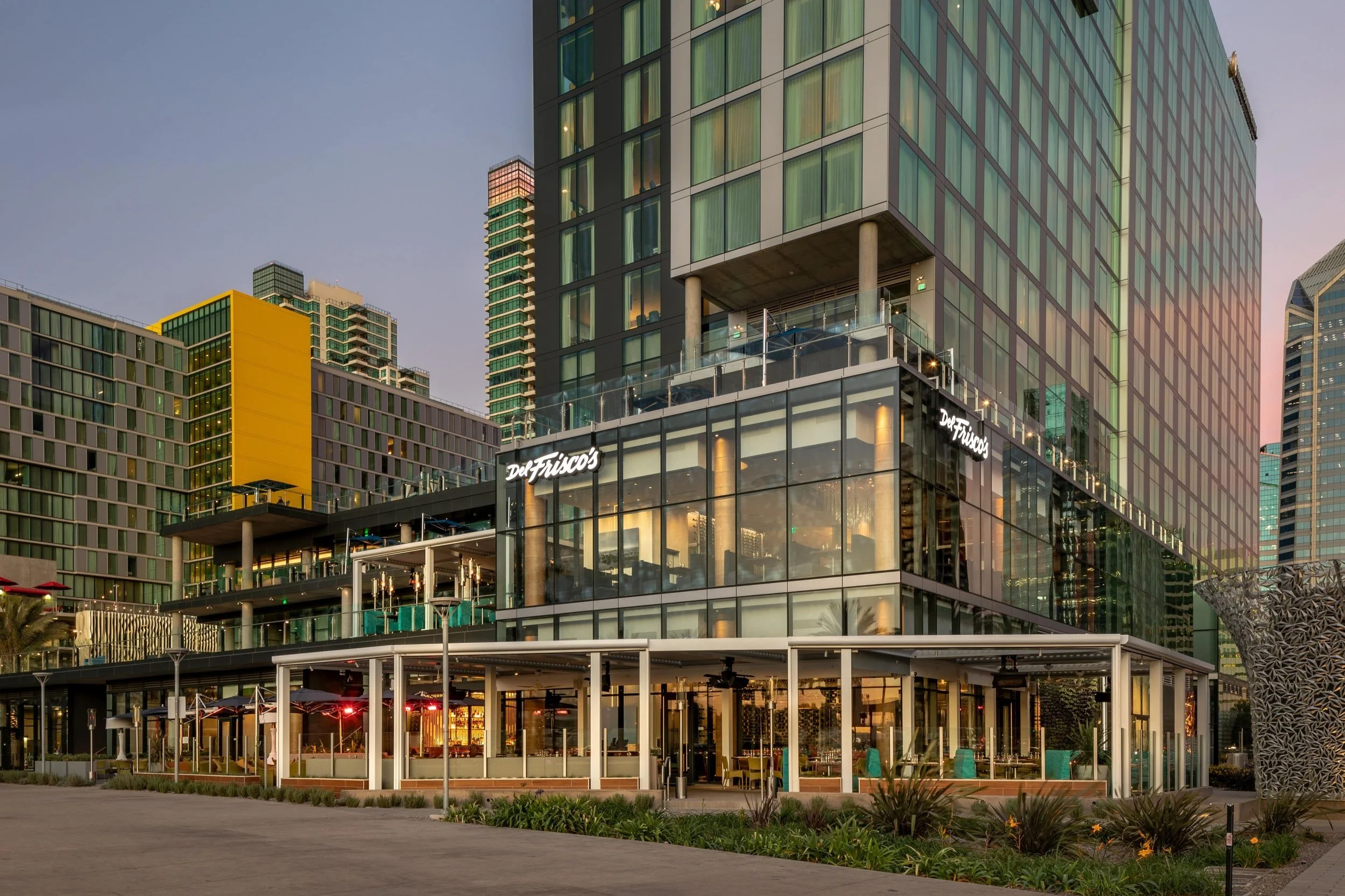Architecture Trends for the Food and Beverage Industry
The 2020s are bringing in a fresh new wave of architecture and design trends for the food and beverage industry, especially in the wake of the COVID-19 pandemic. Architects and designers can breathe new life into old restaurants and take new ones to the cutting edge with these rising trends in the food and beverage industry.
Prioritizing Health and Safety
At the top of most restaurants’ priorities coming out of 2020 are health and safety. The COVID-19 pandemic magnified the importance of clean, sanitary spaces for eating.
For example, an emphasis on high-performance air ventilation has been on the rise since the start of the pandemic. It is common knowledge now that effective air ventilation can help prevent the spread of airborne diseases. This is especially important in the food and beverage industry since customers can’t eat and drink while wearing a mask. Using antibacterial and antimicrobial materials for any surface that customers will often be touching is also a great way of limiting the spread of disease.
Along with high-quality ventilation systems, designers should consider how they use space inside a restaurant. Many people don’t feel comfortable waiting in line for their food or eating at their table while crammed between strangers, more so than ever in the shadow of COVID-19.
Restaurant designers should consider layouts that spread out crowds and allow for a clearer separation of spaces. This way, customers can socially distance themselves as much as they feel comfortable with.
Space for Mobile Orders
Mobile ordering boomed during the pandemic. While orders for delivery surged at first, they have been less popular as the pandemic has begun to decline. There are a few reasons for this.
Many customers want to support restaurants after hearing about the high commission fees that popular third-party delivery apps charge. Additionally, after staying inside for months during the height of the pandemic, some customers are getting back to the office or simply eager to get out into the world again.
All of this has given rise to mobile ordering for pick up in-store. Whether it’s out of support or convenience, more customers are choosing to come out to restaurants to pick up their orders.
Designers should keep this trend in mind. Delivery and ordering ahead are expected to maintain popularity well after the pandemic has subsided. When creating a layout for a new restaurant, architects and designers should consider crowd management specifically for mobile ordering. This might mean setting off a distinct space at the front of the restaurant for grab-and-go or maybe placing walls and dividers so that mobile-order customers don’t have to cut through the dine-in line to pick up their food.
Minimalism and Contemporary Design
Minimalism has been a popular aesthetic and lifestyle trend for several years now, but its appeal in contemporary design is giving rise to a generation of beautifully sleek new restaurants. Even such everyday eateries as coffee shops are using these design trends to take on a polished, stylish, and at times futuristic look.
The pandemic has shed new light on minimalist design, as well. Spaces that are simple and sleek have a naturally clean look. It will be obvious if a polished white tabletop is scuffed and dirty. This sleek cleanliness and sense of modernity subtly indicate to customers that a restaurant is sanitary and up to date.
For example, modern coffee shops are a pervasive trend in most cities. They all have a different take on a common design style, offering a glimpse at how designers can customize the look. From cozy to rustic to future-chic, there’s a variety of tones that architecture can imbue into restaurants with the minimalism and contemporary design categories.
This trend will become more popular with customers going into the 2020s and 2030s. The best part is that it can be easy to update a pre-existing restaurant space to look and feel more modern. Remodeling is one of the top reasons why food and beverage businesses seek financing, and the simplicity of minimalist design offers great style value at an affordable price.
Seeking More Sustainability
Sustainability and fighting climate change have gained more public support than ever over the last couple of years. Many customers are making it a priority to find and support businesses with sustainability initiatives. Sustainability in design is a confident, clear show of support for environmentally friendly business practices. There are countless ways of achieving this, and finding the best fit comes down to the design tastes of the particular restaurant.
For example, more and more buildings around the world are designed to be carbon-neutral or generate their own power with solar panels. A unique and fascinating new trend is buildings that are literally green, and covered in plant life to provide shade and boost energy efficiency. Furniture made of recycled or repurposed materials is another eco-friendly touch, as well as energy-efficient glass for windows.
Creating Flexible Spaces
The pandemic forced everyone to make more out of less, especially with space. There’s a variety of ways that restaurants can get the most out of their space with designs that are created with that flexibility in mind. For example, ghost and virtual kitchens have become more popular over the last year. These are restaurants that operate for delivery only, often partnering with brick-and-mortar restaurants to rent out part of their kitchens. A large, open kitchen space will allow for this secondary source of income for traditional restaurants.
Additionally, outdoor dining gained popularity during the pandemic since customers know that being outdoors without a mask is much safer than being indoors without one. This has led to a newfound appreciation for fresh air and outdoor “streeteries.” Customers will appreciate stylish outdoor eating spaces in new food and beverage businesses.
A Fresh Start for Food and Beverage Design
While the 2020 COVID-19 pandemic may have hit the food and beverage industry hard, the world is beginning to get back up again. The forced shutdown from the pandemic can now serve as a fresh start for food and beverage businesses. Design tastes are taking on a creative, modern, and sustainable new edge, one that can revitalize pandemic-weary restaurants and bars and jump-start new ones.
Author Bio: Evelyn Long is a writer and editor-in-chief for Renovated, a web magazine for the home industry. Her work focuses on design and construction tactics for industry professionals.
cover image ©






